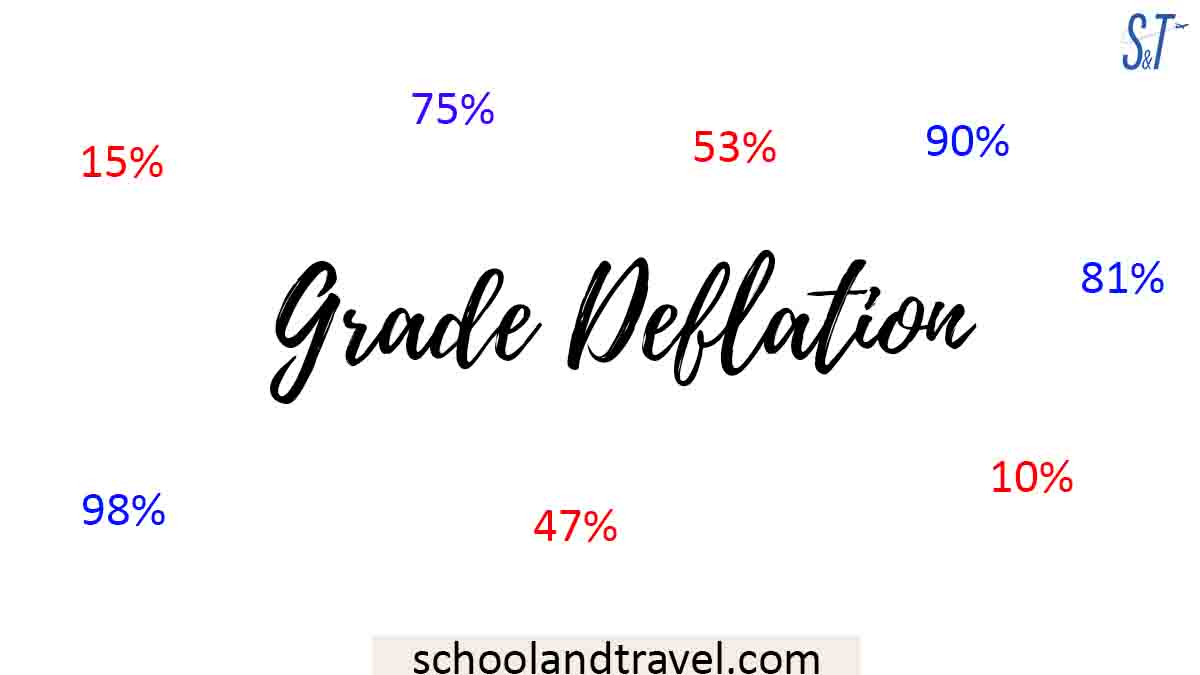Grade deflation is a practice that various students never seem to understand, specifically considering the student’s performance from class to class.
The uncertainty has increased students’ anxiety about grades, and many believe that grade deflation is unfair because it ignores the uniqueness of one’s work.
Students sometimes get angry at the practice of the university’s policy or marking scheme; most times, low grading makes the student not thrive but instead, it makes them venture out of their way to do otherwise.
Intentionally lowering grades is extremely discouraging to students. The idea that a category or class has done “too well’ and must now be repressed hampers classroom evaluation and treatment.
Impact of Grade Deflation on Education:
Education should be a section of life where students are encouraged to thrive through the support of their instructors.
Classes are designed to make things as simple as possible so that everyone’s grades improve, and this is usually found at or above 75.
The bell curve distribution has skewed by misrepresenting a student’s unique ability in a school with grade inflation, in some cases when most colleges grade their students between 85 and 100 in their courses.
Suddenly, you’ve got over 40% of a category obtaining an extremely high GPA for a category, which isn’t how it should work.
System of Grade Deflation:
Many schools and institutions have sought to establish a system of grade deflation.
This implies that the examinations would be re-evaluated to provide a nice, even bell curve distribution, with many students obtaining Cs, fewer receiving Ds and Bs, and even fewer receiving Fs and As.
Most colleges attempt to make their courses extremely tough, resulting in a massive downward movement toward the goal, with some courses having averages in the low 40s or high 30s, pushing the projected bell curve up to the A-B-C-D range.
This system is far superior to shifting down, since at the MAX, a student can receive a 100, and if 15-20% of your class receives 100s, you can’t select who should receive a high B, low A, or other grades.
So instead of making everyone fail, the 000 failures will get between 0-10, the most effective students will even out, and you get a nicely shifted bell curve. But mostly, the student uses their grading to complain about how tough a course is.
It’s crucial to note that this isn’t always the case, and professors/teachers aren’t always to blame.
As seen in most schools/universities, professors must follow the practices that their superiors dictate. Suspicions should be addressed/directed toward them, and through these mediums, students must demand clarity and fairness in grading.
Read this: Intended Major (Meaning, How-to, Undeclared, College Acceptance)
Grade deflation vs. Inflation:
Grade deflation could be a counter-reaction against grade inflation. Either way, it’d work identically; make the tests harder/easier then adjust the middle point of the curve higher or lower.
The college also argued that deflating grades would better reflect a student’s academic ability and hence increase their value.
However, this system is severely difficult in practice because it motivates competition and hurts students’ expectations after graduation.
Well, they have been a tough and fast rule for the way grades are given across schools. A student at one school might receive a 4.0 for the identical quality of labor and a 3.2 for another.
This can be one reason why comparisons of students across schools are difficult at all levels. As a result, standardized tests (which most people hate) are the sole objective measure students get from different schools.
Grade Deflation: Impact of Grade in Admission
Since grades are a factor in admission to higher institutions, scholarships, and even employment, most faculties try to keep their grades within a broad range, so others view their results as reputable.
If a faculty feels that their grades are too high compared to others, they may deflate them to retain reputation. If you think that a 90-100 = A, 80-89 = B, etc, then, after all, the universities can mess with grades.
Read this: How Long Does It Take To Get A Student Loan?
Conclusion
Instead of receiving largely As, a few Bs, and a few Cs, most students receive a few As, a few Bs, and a good dose of Cs and Ds.
The exams and tests are very difficult, and there is no “curving” to change the average towards a B.
Awesome one; I hope this article answered your question.
Share this Information.
Editor’s Recommendations:
- How to Create a Balanced Plate: The Key to Healthy Eating
- How to Start a Virtual Book Club with Friends
- The Top Credit Score Hacks Every Young Adult Should Know
- The Pros and Cons of Rental Property as a Passive Income Stream
- Enhancing Your Clinical Psychologist Job Prospects with Professional Help
- The Impact of Graphic Design School on Your Future Earnings Potential
- 7+ College Scholarships for Muslim Students (FAQs)
- Flavor of the Month Scholarship 2024 (Requirements, FAQs)
- Vegetarian Scholarship (Requirement, Deadline, FAQs) | 2025
- John and Abigail Adams Scholarship 2022-2024 (Eligibility, Deadline)



